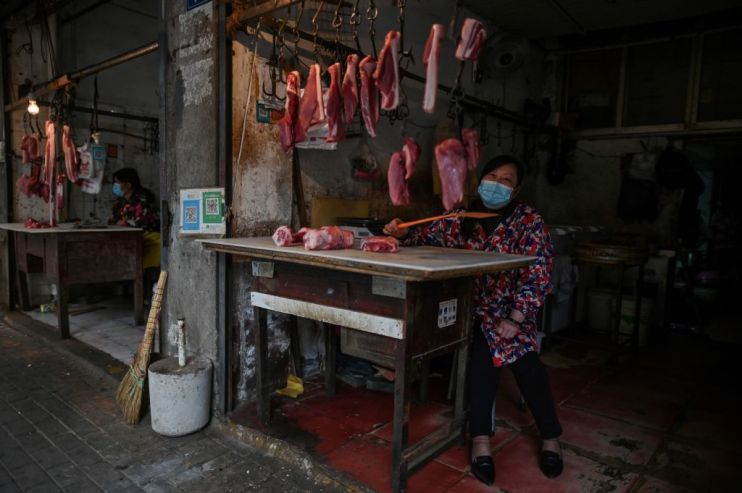Coronavirus: What can the Chinese economic experience teach the rest of the world?

The Coronavirus pandemic has brought unprecedented pressure upon the global economy, yet the length of this paralysis is key to answering many of the questions being asked. Albeit too early to properly assess what effects containment measures – initiated by governments across the world – are currently having, it is likely that these will intensify if current measures prove insufficient in slowing the crisis.
The outbreak has led to the closure of many factories, restaurants and shops in China – all of which will likely cause the economy to contract for at least the current quarter, or maybe longer.
Certainly, the question now is what the result of this shock might be as it works its way across and beyond the nation, and what other countries battling the pandemic can learn from it.
In the initial phase of the crisis – as the outbreak was mostly confined to China – Europe was only indirectly affected via weaker external demand. However, as the virus now spreads at a rapid pace across the western world, the impact on growth is becoming very apparent.
The containment measures announced over the past few weeks imply that we should expect a significant shock to the economy, with estimates that the Eurozone economy contracting by 4% in Q1, and a further 8% in Q2 – certainly, production will be severely hampered by restrictions on employees’ ability to reach their workplace. Meanwhile, shops, restaurants, hotels and tourism are already among the hardest hit by travel restrictions and forced closures.
Read more: European countries plot lockdown loosening
Rising unemployment
The swift and profound impact of the pandemic in China was seen in February, when the Chinese job market witnessed a catastrophic blow. According to an estimate by economists at Australia & New Zealand Banking Group, eight million people were made redundant in the first two months of this year.
Yet reversing the trend of rising unemployment has been a clear priority for the government, with the aim of ending absolute poverty by the end of the year. Indeed, the authorities already have a set of measures in place to support jobs and prevent the unemployment rate going above the record 6.2% seen in February.
Nevertheless, while the domestic economy is returning to normal, the expected slump in global demand from the pandemic could backfire on Chinese factories, putting many jobs at risk again.
Small companies face bankruptcy risks
Undoubtedly, the most immediate effect of the outbreak in Europe has been on shops, restaurants and other small companies that were either forced to close or have tried to stay afloat with little to no business for weeks. While manufacturers can increase production to make up for lost time, it is unlikely retailers will be able to recover lost income from the decrease in consumer spending.
As such, there are concerns about how long small and medium-sized enterprises can survive with a significant slump in revenue. In China, only two-thirds of firms had sufficient cash reserves to survive for a maximum of three months, despite the authorities implementing a number of relief measures – including cheaper loans, a tax rebate and delays to loan payments.
Regional bank stress
A recession will not only lead to increased levels of bad debt but it will also damage the quality of assets, hitting banks’ balance sheets. According to the People’s Bank of China (PBoC), 17 of 30 major banks in China would fail stress tests if economic growth slowed to 4.15%. The condition is clearly more challenging nowadays as the Coronavirus outbreak has hit the economy tougher with a growth forecast at 3% in 2020, which is already an optimistic scenario.
Smaller rural banks were already in a precarious position before the Coronavirus outbreak – with at least three being bailed out or rescued last year. Deteriorating asset quality and falling profitability increases the concern that some more small banks will come under pressure or fail.
Meanwhile, European banks are thankfully more solid than during the 2008 financial crisis. Most banks, analysis indicates, would be able to cope with a recession although it will clearly worsen their asset quality. Furthermore, even lower interest rates will hurt their profitability.
The current situation is unprecedented on many levels, and forecasting cyclical developments is even more difficult than it already is in “normal” times. One thing is for sure – the speed with which the Coronavirus pandemic has evolved has necessitated huge cuts to GDP forecasts, with the world economic activity now expected to decline by 1.9% in 2020.
After weeks of lockdown, China is starting to lift restrictions in an attempt to return the country to normal, although very slowly. But, while the economy is struggling to regain its footing, China’s success in slowing the epidemic is proof that the country’s draconian containment measures worked, with the most dramatic one being the lockdown of tens of thousands of people.
Tough times may lie ahead, but there is hope that other countries will take heed. Lockdown – implemented correctly – will help curb the spread of the virus enabling containment measures to be gradually lifted in more regions and a robust recovery that will spur widespread economic growth.
Alicia Garcia Herrero is Chief Economist for Asia Pacific at Natixis.